
Q: At first glance, I found the front so over dramatized that I assumed it was a tourist piece. Then the cracking/aging paint got my attention that this thing has considerable age. And then finally, I was in shock to see both the amount of patina and craftsmanship of the reverse side.This thing clearly has been danced heavily. The craftsmanship on the back had me initially thinking Japan. However, the tear-drop eyes make me think Korean. This is not a style of an Oni or devil I’ve ever equated to Japan. Ever seen Korean Devils? Can you pin-point this? Nate, 837
A: I don’t where this is from. China, Korea, Japan are all possibilities. And your photos are so clear I can tell it is an authentic artifact that was made and used a long time ago. So all we can do it hope that our viewers are not too shy to comment on the blog. This is a tough one!
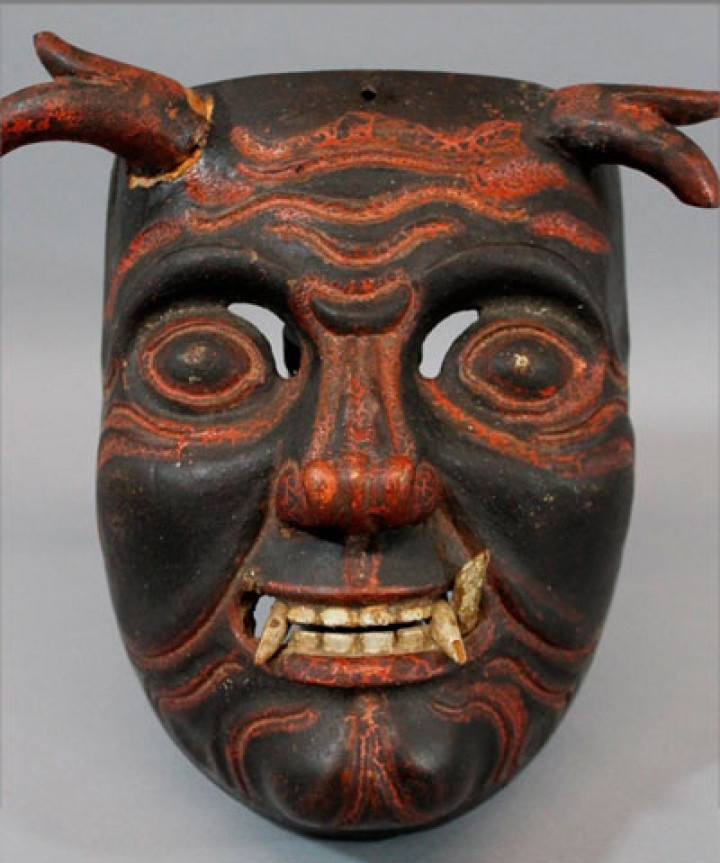
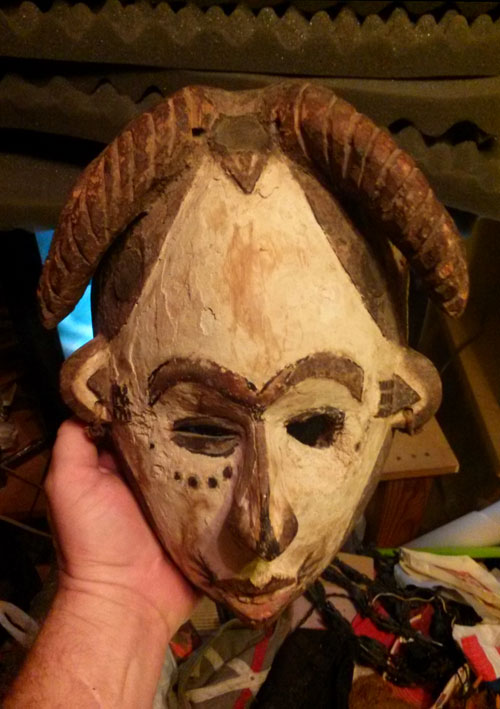
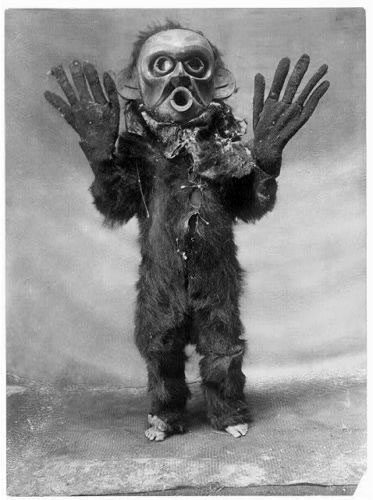
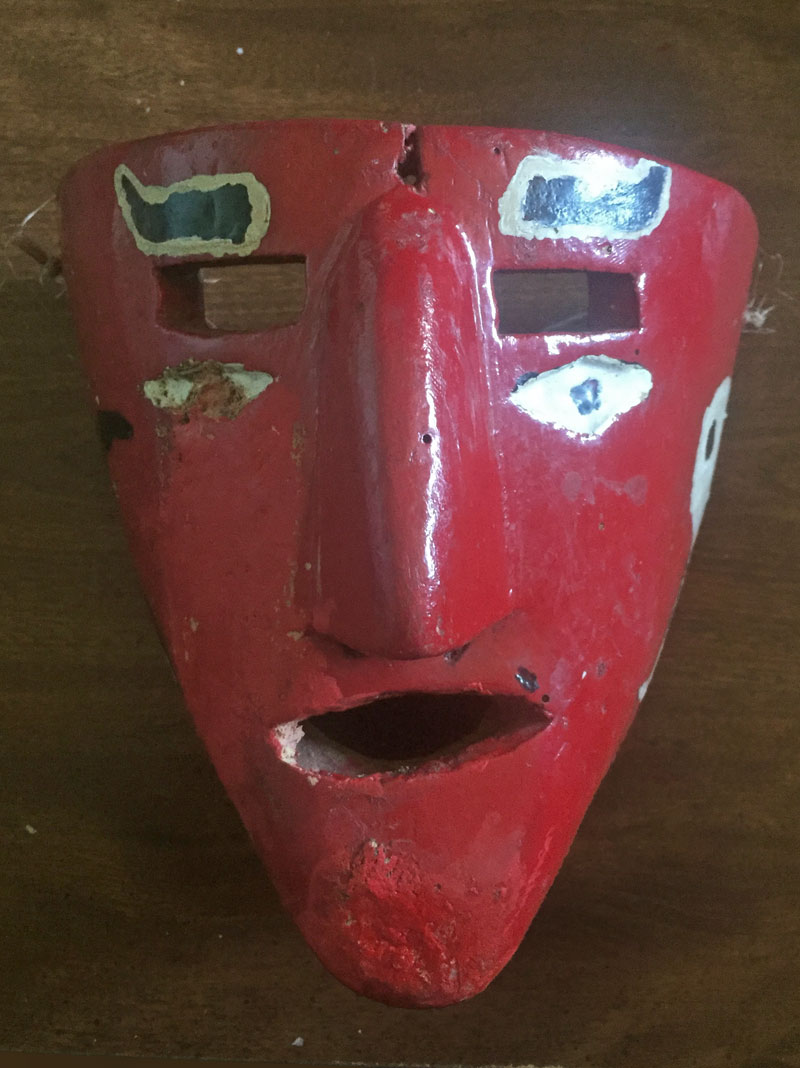
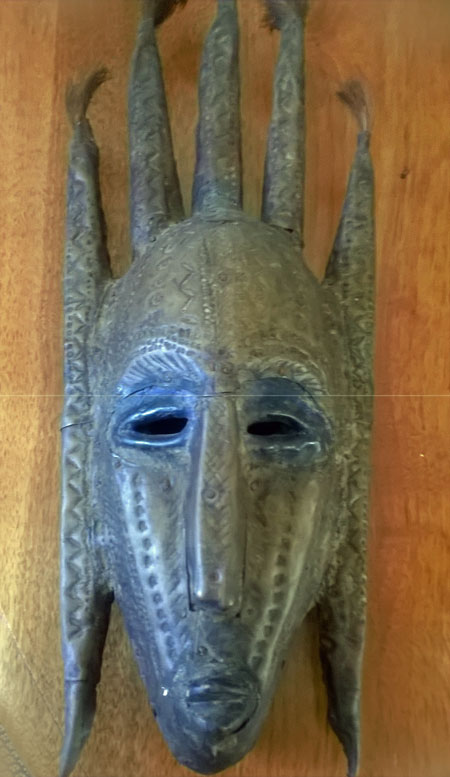
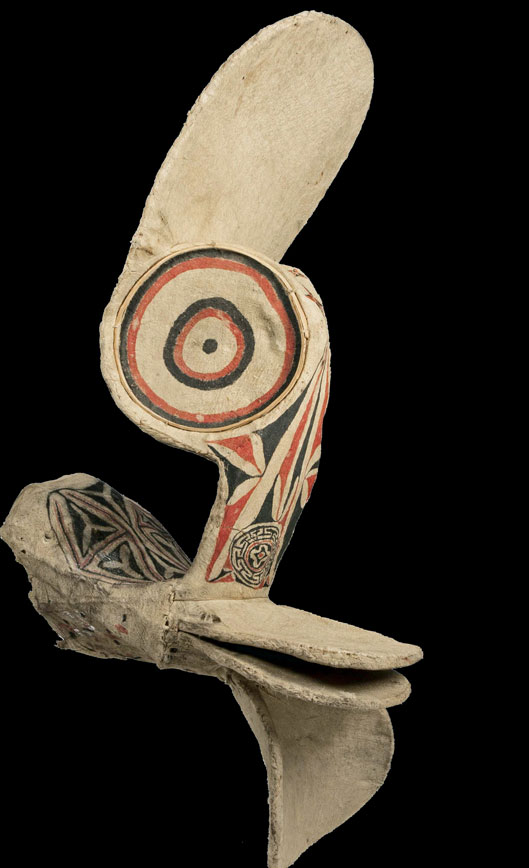
10 Comments
Bryan Stevens
This is a diablo mask from Guatemala. You can see more of them on my blog- mexicandancemasks.com
this week.
Bryan Stevens
Nate
Bryan, thanks for your note. The mask actually had a tag on it stating the same… that it was a Diablo from Guat. While the shape of the eyes and short, stubby, dual-branched antlers would help attest to Guat, all other aspects of this seem to contradict this. Especially the thin, uniform carving of the mask, and perhaps most.. the Asian style of the deeply recessed “triangle” nose. That said, you seem steadfast in your belief that this is Guat. What makes you feel so sure?
Bryan Stevens
If you go to my website, mexicandancemasks.com
I blogged this week on the subject of Diablo masks from Guatemala, and I illustrated my remarks with photos of three masks that are m/l identical to this one. There are more near duplicates in books about Guatemalan dances and masks. See
Masks of Guatamalan Traditional Dances Volume 2, by Brown and Rossilli, pages 560-562, and Guatemala’s Masks and Drama, by Jim Pieper, page 236.
Bryan Stevens
Nate
Bryan, you are most definitely correct! “Dance of the 24 Devils” per Pieper I am embarrassed to say :). Not sure how I had missed that one. Whats hard for me to grasp is the quality that the back side of this mask was carved. I would have never thought that a Guatemalan mask would have the same attention to detail, and precision carving as some of the most elite Japanese ones I’ve ever seen. That is a first…I stand surprised and enlightened!
This one is definitely far older than the examples in Pieper’s book.
Nate
Bryan, the last green Diablo you have on your blog that is carved by Oscar Cruz is done in same master-carver techniques that look more Japanese than Guat. Absolutely stunning pieces of Guatemalan art. Thanks again for sharing.
Aaron
I agree with Bryan. The eye hole shape and placement alone take you about 95% of the way to a conclusion of “Guatemala.” European, Korean, Japanese, Monpa, and Tibetan eye holes are almost always the at the pupils or the entire eyes. Chinese are either the whole eyes or both sides of the eyes. Sri Lankan and Indonesian Ramayana masks have holes under the eyes. Only in Europe are classical red devils common (the things typically mistaken for devils in Japan are something else entirely), and this is definitely not European. It’s mainly Mexico, Guatemala, and the Andean regions that do their eye holes above the eyes and make classical devils. Since Mexican and Andean eye holes are usually long slits taking up the whole area between the eye and eyebrow, that leaves Guatemala, where small eye holes above the eyes or at the sinuses are common, and devils are stock characters of dance-drama.
Chris
Wow, what a great mask – and what great comments! I’m gonna print that out 🙂 thank you all for enriching this useful blog.
Chris
Bryan Stevens
Thank you for your comments on mine.
For those interested-
I blogged on Guatemalan masks over the last 10 weeks, showing many cool masks from a number of dances. The quality of carving on those masks is all over the court, from crude to great. This coming Monday I will begin a series of blogs about Juanegro masks of Hidalgo and Veracruz, Mexico, to be followed by Xantolo masks that portray the dead for Day of the Dead Fiesta in the same states of Mexico (mid September through December).
Bryan
Jay
Fantastic mask! I am an acquaintance of Oscar Cruz and have some interesting images that link this style to the modern Sacatepéquez “24” and associated group of dances devil masks that you may be interested in seeing. Perhaps the site administrator can provide a means to swap email addresses? I am very interested in getting a better look at the scribbles that are evident on the back of the mask to see if they provide any additional info as to origin.
Cheers, Jay
OSCAR CRUZ
gracias por interesarse en el tema de las mascaras de Ciudad Vieja Guatemala, efectivamente la mascara es originaria de aquí, cualquier duda con gusto podre aportar de mi corto conocimiento.